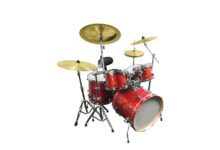What is Called a Group of Fish : A Fascinating Insight
A group of fish is called a “shoal”. It is a collective set of nouns that is most commonly used around the world to describe a group of fish.
Fish, marvelous creatures inhabiting the depths of our oceans, come in all shapes, sizes, and colors. They have their own unique behaviors and habits, one of which is their tendency to gather in groups. These gatherings of fish are known by various names, but the most commonly used collective noun for a group of fish is a “shoal”.
We will explore the concept of a shoal and delve deeper into the reasons behind fish exhibiting this behavior. Whether you are a marine enthusiast or simply curious about the wonders of the underwater world, this guide will unveil the mysteries of what happens when fish come together in large numbers. So, let us dive into the fascinating world of shoals and unravel the secrets of these captivating underwater assemblies.
1. The Definition Of A Group Of Fish
A group of fish is commonly called a “shoal” or a “school. ” These terms refer to a collective set of fish, either of the same species or mixed species, swimming together.
| The Definition of a Group of Fish |
| Shoal: A group of fish with different species that move together. |
| School: A collective set of fish that commonly describes a group. |
2. Why Is It Called A ‘school’ Of Fish?
| What is Called a Group of Fish |
|
A group of mixed species of fish is called a “shoal”. A group of fish that are not the same species is called a shoal of fish. The word ‘shoal’ refers to a simple group of fish. It can contain a number of different species all grouped together. Shoaling occurs because it makes it easier for fish to find food as more individuals actively searching improves the chances of finding prey. On the other hand, a group of fish of the same species is known as a “school”. The term ‘school’ is an evolution from the 13th-century Dutch word ‘schole’, which means a troop or crowd. The collective noun ‘school’ is used to describe a synchronized form of swimming where fish swim together in a coordinated manner. It is often observed as a defense mechanism against predators. In conclusion, while both terms ‘school’ and ‘shoal’ are used to describe a group of fish, the distinction lies in whether the fish are of the same species or not and the behavior they exhibit when swimming together. |
3. Other Collective Nouns For A Group Of Fish
| Other Collective Nouns for a Group of Fish |
Draft: A term used to describe a group of fish swimming together.
Run: A collective noun used to refer to a group of fish moving in unison.
When it comes to collective nouns for a group of fish, there are several terms used to describe them. One common term is “school”, which is often used to refer to a group of fish swimming together. Another term is “shoal”, which is used to describe a group of mixed species of fish swimming together. Additionally, the term “run” is used to refer to a group of fish moving in unison. These collective nouns are commonly used to describe the behavior of fish and how they interact with each other in their natural habitats.
Note: There are also other terms used to describe a group of fish, such as “pod” or “swarm”, depending on the species.

Credit: www.nytimes.com
Frequently Asked Questions For What Is Called A Group Of Fish
What Does A Bunch Of Fish Called?
A group of fish is called a “shoal” or a “school. “
What Is A Group Of Salmon Called?
A group of salmon is called a “run”.
What Is A Family Of Fish Called?
A family of fish is called a “school” or “shoal” of fish.
What Are The Groups Of Fish?
A group of fish is called a “shoal. ” It can contain different species and is commonly used to describe a collective set of fish.
Conclusion
To summarize, a group of fish is commonly referred to as a “school” or a “shoal. ” This collective noun is used to describe a gathering of fish, whether they belong to the same species or not. Fish form schools or shoals for various reasons, such as protection, feeding, or reproduction.
Understanding the terminology related to fish groups adds to our knowledge of these fascinating creatures and their behavior in their natural habitat.










